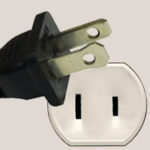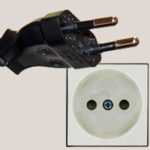Know before you go
Peru
General Information
Peru is located in western South America bordering Ecuador, Colombia, Brasil, Bolivia and Chile. Its capital and largest city is Lima. They drive on the right side of the road.
Visa
Holders of a EU passport don’t require a Visa. For holders of a different passport check out this link to see if you are required to apply for a visa or not or contact your ministery of foreign affairs.
Watch Geography Now!
The video will give you a good first overview of Peru.


Power
Peru uses Type A and C plug outlets. Type C plug outlets will also work with plugs of Type E and F. The voltage is 220 Volt and the frequency is 60 Hz.
Language
Spanish is the official language of Peru. In touristy areas you can get by with English. Outside of them it might be hard to find someone who speaks a decent level of English though.
| Spanish | English |
|---|---|
| ¡Hola! | Hello! |
| ¡Adiós! | Bye! |
| sí | yes |
| no | no |
| ¡Gracias! | Thank you! |
| ¡De nada! | You're welcome! |
| Disculpe! | Excuse me! |
| Salud! | Cheers! |
Weather Forecast
Climate
The coastal region has moderate temperatures, low precipitations, and high humidity, except for its warmer, wetter northern reaches. In the mountain region, rain is frequent in summer, and temperature and humidity diminish with altitude up to the frozen peaks of the Andes. The Peruvian Amazon is characterized by heavy rainfall and high temperatures, except for its southernmost part, which has cold winters and seasonal rainfall.
Average Temperature in Lima
Average Precipitation in Lima
Transportation
How to get there?
Perus largest airport is Jorge Chávez International Airport (LIM) in Lima. Many airlines offer direct flights from Europe to Lima.
How to get around?
Most of the public transport happens with Minibus taxis. They will drive by a bus stop and the conductor will shout their direction to the people waiting. If you want to get on the Minibus you have to give them a sign. If nobody wants to get on, the bus won’t stop. Prices are really cheap (around 1-2 Soles per ride) but you have to know where you are going as there are no schedules or announcements.
If you don’t feel comfortable riding in the Minibus taxis (which can get very crowded) you can take a taxi. The price is negociated upfront. If you look like a tourist, you will almost certainly pay a higher price. Have your host or hotel call a taxi for you and negociate the price. It will save you some money.
How to get from town to town?
There are intercity buses of various luxury and price levels in Peru. Don’t underestimate the size of the country though. Sometimes, taking the plane is the better option. Driving from Lima to Cusco for example will take almost 20h. A flight will take you there in 1:15h.
Money, Money, Money
Currency
The currency of Peru is the Nuevo Sol. Check out the currency converter to find out about current exchange rates.
Accommodation
Depending on where you are staying prices will vary of course. Expect to be paying around 20€ per person per night.
Cash
Upon entering Peru you will have to withdraw Sol from an ATM. Credit cards are not accepted everywhere and cash is still king in many places like restaurants, markets and small shops. How much you will need of course depends on your spending habits. Expect to need around 25€ per day for food, transportation, activities and souvenirs.


